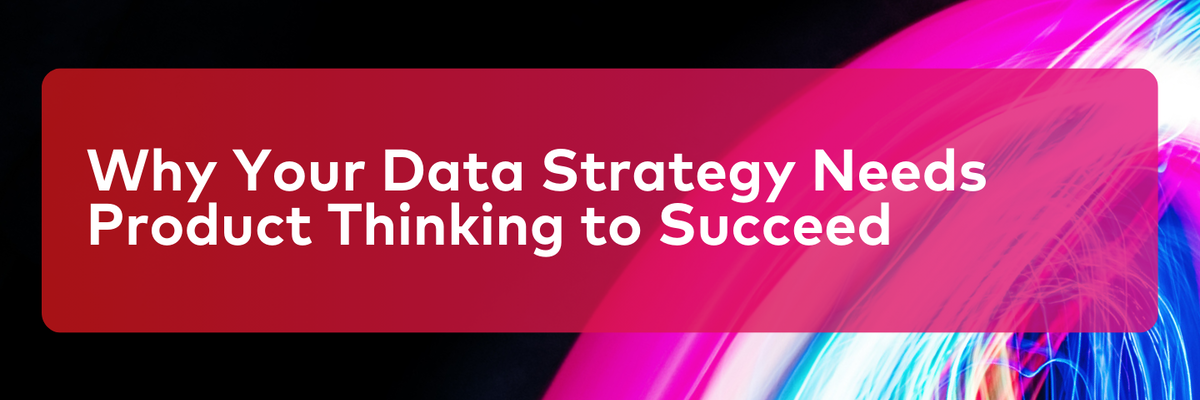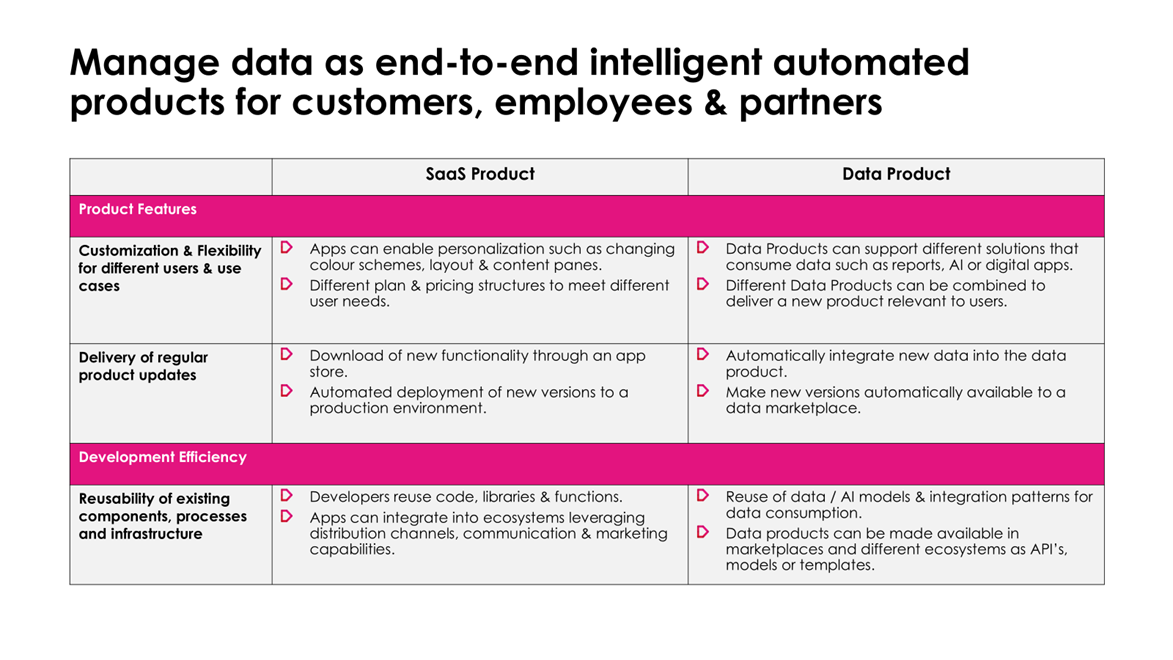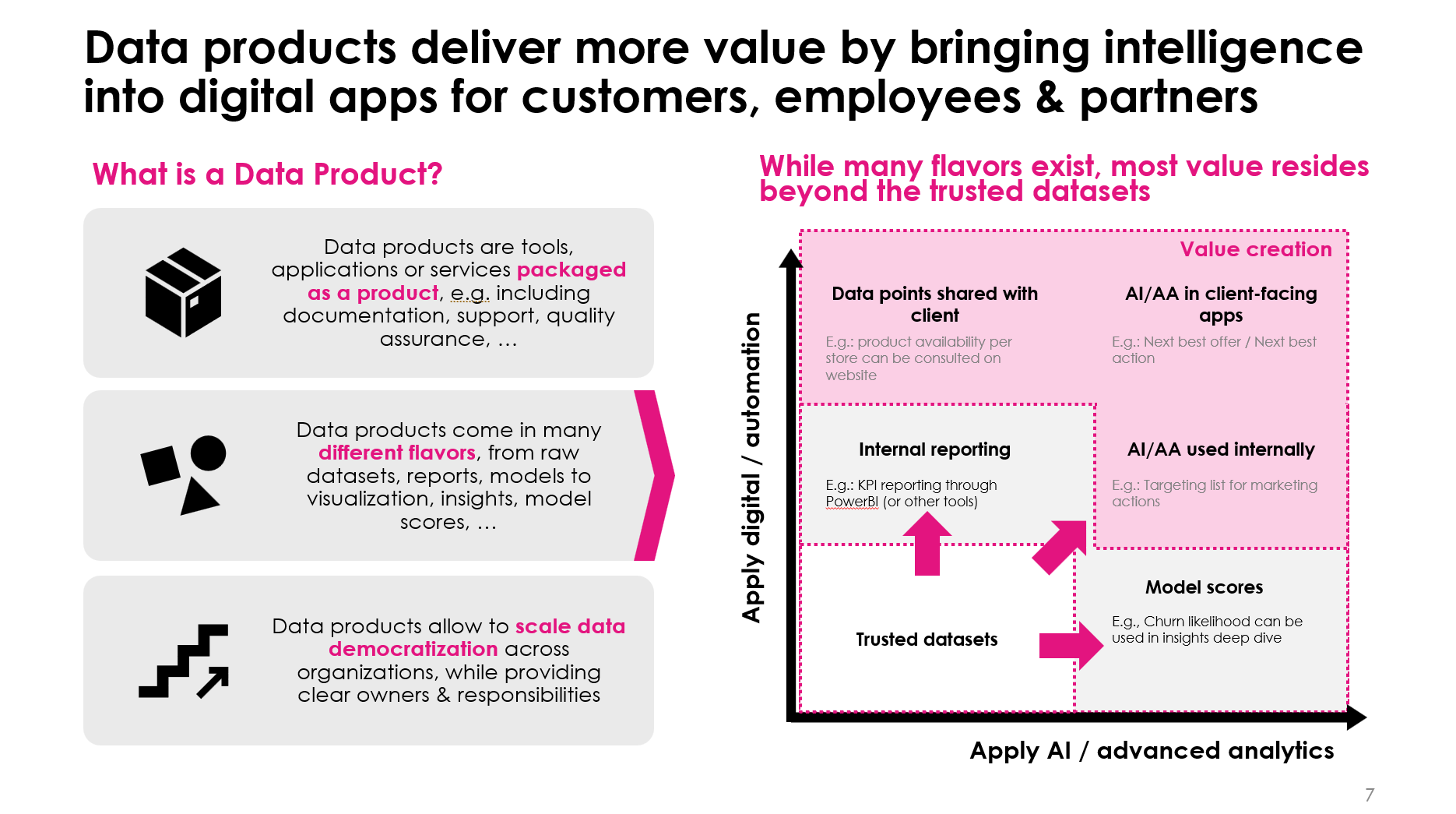The Power of Product Thinking in Data Management to increase business success
5 May 2025

In recent years, many companies have heavily invested in data platforms, pipelines, and analytics teams—but far too often, those investments fail to deliver meaningful business results. While the technical foundations are laid with care and precision, the translation of data into business value remains frustratingly inconsistent.
One of the underlying causes is a structural one: data initiatives are still too often treated as IT projects, disconnected from the realities and priorities of the business. This has resulted in data solutions that are technically sound but underused, misunderstood, or irrelevant.
To move beyond this disconnect, more and more organizations are looking to Product Thinking as a way to build bridges between business and technology teams—and to finally unlock the value of their data.
What We Can Learn from the World of Software Products
The concept of Product Thinking originates in the world of software development, particularly within SaaS companies. There, it’s long been understood that success depends not just on delivering functionality, but on building products that evolve over time, solve real problems for users, and deliver continuous value.
Product Thinking means putting the user at the center, iterating based on feedback, and working with long-term goals in mind rather than ticking off a list of technical requirements. It also means assigning clear ownership, typically in the form of a product manager, who is accountable for outcomes, not just output.
This mindset is now finding its way into data management, and it’s not hard to see why. By thinking of data as a product rather than a technical asset, companies can shift the focus from infrastructure to impact.

Moving from Data Projects to Data Products
Traditionally, data teams have been focused on building the "plumbing"—data lakes, warehouses, and ETL pipelines—with the assumption that business value will naturally follow. But without a strong connection to actual business goals and users, these efforts can fall flat.
Data Product Thinking encourages teams to treat data like something people use and rely on, not something that simply exists in the background. That means understanding who the users are—be it analysts, marketers, executives, or even external partners—and designing data products that are usable, accessible, and valuable to them.

The Role of the Data Product Owner
At the heart of this approach is a role that’s still unfamiliar in many organizations: the Data Product Owner. Much like a product manager in a software team, the Data Product Owner is responsible for defining the vision of a data product, aligning stakeholders, and ensuring that what’s being built actually delivers value.
They are the crucial link between business objectives and technical execution. They understand the strategic goals, translate those into data needs, and work closely with both data engineers and business teams to build solutions that work in the real world. Without someone in this role, data projects can easily become directionless—technically impressive, perhaps, but disconnected from the outcomes they were meant to support.
Key Principles of Product Thinking in Data
Adopting a product mindset in data management requires a few key shifts in how teams operate and collaborate. Here are the principles that matter most:
1. Start from Business Objectives
Too many data initiatives begin with a focus on tools and infrastructure. Instead, teams should begin by understanding what business challenge needs to be addressed. Rather than “centralizing customer data,” the real question should be “how can we reduce churn, increase retention, or identify cross-sell opportunities?”
2. Establish Ownership Early
Clear ownership is critical. Data Product Owners are accountable not only for the delivery of data solutions but also for ensuring their usability, adoption, and impact. They steer the roadmap, prioritize features, and act as the voice of the business within data teams.
3. Focus on Value, Not Volume
Success should be measured in terms of how data contributes to business goals—not in terabytes processed or dashboards delivered. That might mean shorter time to insight for a marketing team, better forecasting accuracy for finance, or more reliable customer data for support.
4. Build Incrementally and Improve
A monolithic, “big bang” data platform launch rarely delivers what people expect. Instead, product thinking encourages teams to start small—perhaps with a single high-value data product—and then iterate based on usage and feedback.
Why This Matters More Than Ever
Data & AI are increasingly seen as drivers of competitive advantage, but realizing that potential requires more than infrastructure. It demands a shift in mindset—one that treats data not just as something to manage, but something to own, shape, and evolve.
By applying Product Thinking to data, organizations can break down silos between business and tech, clarify priorities, and deliver solutions that are actually used. And by putting Data Product Owners at the center of that effort, they create the kind of ownership and accountability that’s been missing for far too long.
Let data actually work for your business!
For organizations serious about becoming data-driven, adopting Product Thinking isn’t just a methodology—it’s a necessity. It’s how we ensure that data initiatives lead to real, measurable business value.

